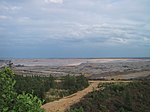LVR-Cultural Centre Village Synagogue Rödingen

The LVR-Cultural Centre Village Synagogue Rödingen (German: LVR-Kulturhaus Landsynagoge Rödingen) is located in Rödingen, municipality of Titz, district of Düren, State of North Rhine-Westphalia, Germany. It is a permanent exhibition in a former synagogue and a former family house of the head (Vorsteher) of the local Jewish community. It is dedicated to Jewish Life in rural Rhineland of past and present. Today the Rödingen synagogue is the only Jewish house of worship in the western Rhineland still largely in its original condition. In 1999 the Landschaftsverband Rheinland (LVR), a assembly of municipalities, bought the entire property with the intention of opening the buildings to the public. The Cultural Centre was opened in September 2009, the European Day of Jewish Culture.
Excerpt from the Wikipedia article LVR-Cultural Centre Village Synagogue Rödingen (License: CC BY-SA 3.0, Authors, Images).LVR-Cultural Centre Village Synagogue Rödingen
Mühlenend,
Geographical coordinates (GPS) Address Nearby Places Show on map
Geographical coordinates (GPS)
| Latitude | Longitude |
|---|---|
| N 50.9655 ° | E 6.4612 ° |
Address
Mühlenend 1
52445
North Rhine-Westphalia, Germany
Open on Google Maps









